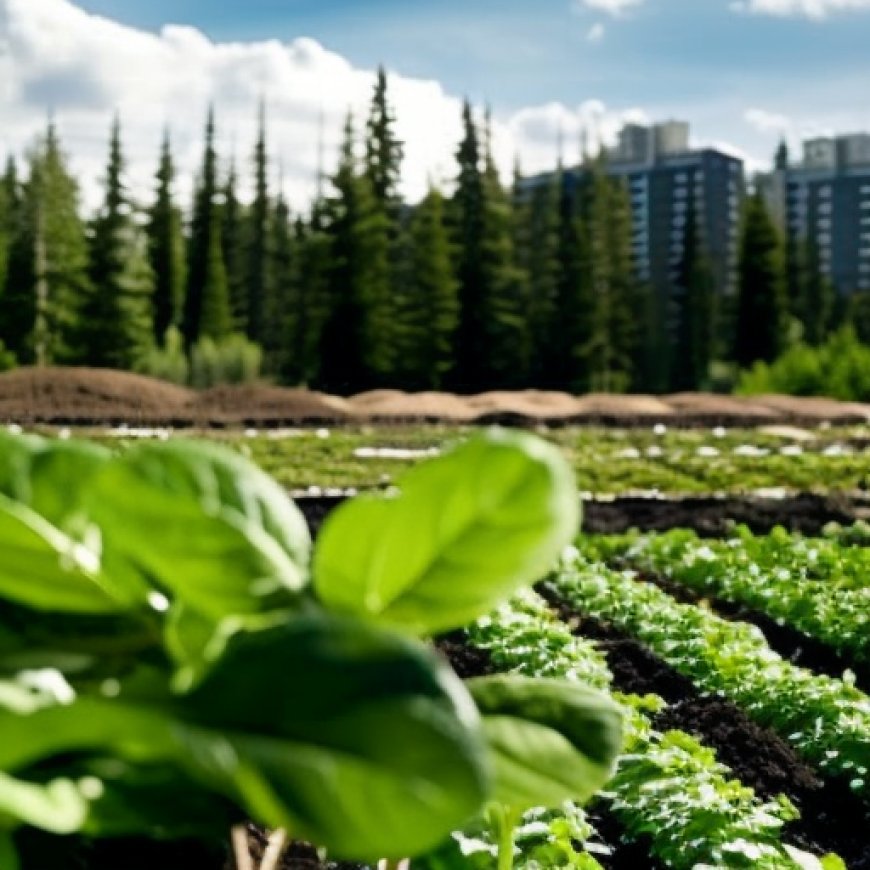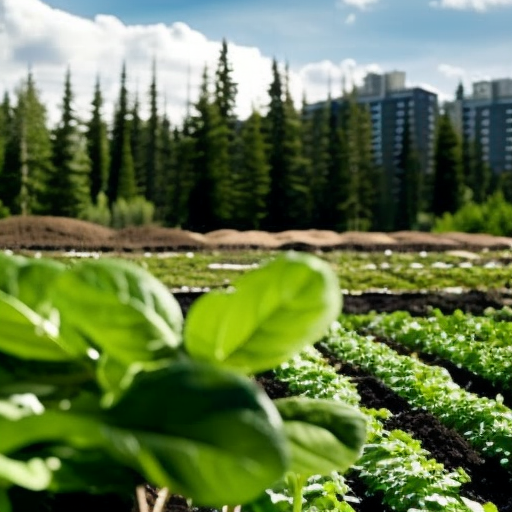Even gardens have a carbon footprint. Here’s how to reduce the climate impact of urban farming | CBC News
Even gardens have a carbon footprint. Here's how to reduce the climate impact of urban farming CBC.ca


Urban Gardening and its Carbon Footprint
Urban gardening may seem environmentally friendly, but a recent study suggests that it has a larger carbon footprint compared to conventional agriculture. The study, published in the science journal Nature, found that the carbon footprint of food from urban agriculture is six times greater than that of conventional agriculture.
The Study
The study involved citizen science at 73 urban agriculture sites across Europe and the United States. It compared food from large-scale conventional agricultural farms and various types of urban agriculture sites, including professionally managed urban farms, individual gardens, and collective gardens.
The study revealed that the primary contributor to the carbon footprint of urban agriculture was the infrastructure used for growing food. Materials such as raised flower beds, trellises, and tools have an embedded carbon footprint.
Reducing the Impact
Despite the findings, there are ways for gardeners to reduce their impact on the environment. One approach is to use reused or reclaimed materials for gardening. By utilizing materials that already exist, gardeners can minimize their carbon footprint.
Gardeners are encouraged to maintain their existing equipment instead of discarding it. Continuously using the same tools and materials allows for more food production and social benefits without contributing to additional carbon emissions.
A Sustainable Community Garden
Some collective gardens in Alberta have already taken steps to reduce their environmental impact. The Star Garden in St. Albert is an example of a community garden that focuses on sustainability.
The garden follows old-school gardening practices such as deep mulching and no-till gardening. Deep mulching involves using organic materials like cardboard, wood chips, straw, leaves, and grass clippings to feed the soil naturally. The garden sources most of its materials through donations, minimizing its carbon footprint.
Tips for Reducing a Garden’s Carbon Footprint
The study’s lead author suggests several ways to reduce the carbon footprint of urban gardening. These include maintaining infrastructure for as long as possible, leveraging the urban waste stream by managing compost and using rainwater, and using recycled or reclaimed materials.
Choosing the right vegetables to grow is also important. Some vegetables have a larger carbon footprint when conventionally grown, such as tomatoes and asparagus. By being mindful of the vegetables grown, gardeners can further reduce their carbon emissions.
Overall, while urban gardening may have a higher carbon footprint compared to conventional agriculture, the social benefits and connection with nature that it provides outweigh the environmental impact. By adopting sustainable practices and making conscious choices, urban gardeners can contribute to the achievement of the Sustainable Development Goals (SDGs) related to climate action, sustainable cities and communities, and responsible consumption and production.
SDGs, Targets, and Indicators
| SDGs | Targets | Indicators |
|---|---|---|
| SDG 13: Climate Action | Target 13.2: Integrate climate change measures into national policies, strategies, and planning | Indicator not mentioned or implied in the article |
| SDG 12: Responsible Consumption and Production | Target 12.2: By 2030, achieve the sustainable management and efficient use of natural resources | Indicator not mentioned or implied in the article |
| SDG 15: Life on Land | Target 15.1: By 2020, ensure the conservation, restoration, and sustainable use of terrestrial and inland freshwater ecosystems and their services | Indicator not mentioned or implied in the article |
| SDG 2: Zero Hunger | Target 2.4: By 2030, ensure sustainable food production systems and implement resilient agricultural practices that increase productivity and production, that help maintain ecosystems, that strengthen capacity for adaptation to climate change, extreme weather, drought, flooding, and other disasters, and that progressively improve land and soil quality | Indicator not mentioned or implied in the article |
1. Which SDGs are addressed or connected to the issues highlighted in the article?
- SDG 13: Climate Action
- SDG 12: Responsible Consumption and Production
- SDG 15: Life on Land
- SDG 2: Zero Hunger
2. What specific targets under those SDGs can be identified based on the article’s content?
- Target 13.2: Integrate climate change measures into national policies, strategies, and planning
- Target 12.2: By 2030, achieve the sustainable management and efficient use of natural resources
- Target 15.1: By 2020, ensure the conservation, restoration, and sustainable use of terrestrial and inland freshwater ecosystems and their services
- Target 2.4: By 2030, ensure sustainable food production systems and implement resilient agricultural practices that increase productivity and production, that help maintain ecosystems, that strengthen capacity for adaptation to climate change, extreme weather, drought, flooding, and other disasters, and that progressively improve land and soil quality
3. Are there any indicators mentioned or implied in the article that can be used to measure progress towards the identified targets?
No, the article does not mention or imply any specific indicators that can be used to measure progress towards the identified targets.
4. SDGs, Targets, and Indicators
| SDGs | Targets | Indicators |
|---|---|---|
| SDG 13: Climate Action | Target 13.2: Integrate climate change measures into national policies, strategies, and planning | Indicator not mentioned or implied in the article |
| SDG 12: Responsible Consumption and Production | Target 12.2: By 2030, achieve the sustainable management and efficient use of natural resources | Indicator not mentioned or implied in the article |
| SDG 15: Life on Land | Target 15.1: By 2020, ensure the conservation, restoration, and sustainable use of terrestrial and inland freshwater ecosystems and their services | Indicator not mentioned or implied in the article |
| SDG 2: Zero Hunger | Target 2.4: By 2030, ensure sustainable food production systems and implement resilient agricultural practices that increase productivity and production, that help maintain ecosystems, that strengthen capacity for adaptation to climate change, extreme weather, drought, flooding, and other disasters, and that progressively improve land and soil quality | Indicator not mentioned or implied in the article |
Behold! This splendid article springs forth from the wellspring of knowledge, shaped by a wondrous proprietary AI technology that delved into a vast ocean of data, illuminating the path towards the Sustainable Development Goals. Remember that all rights are reserved by SDG Investors LLC, empowering us to champion progress together.
Source: cbc.ca

Join us, as fellow seekers of change, on a transformative journey at https://sdgtalks.ai/welcome, where you can become a member and actively contribute to shaping a brighter future.







